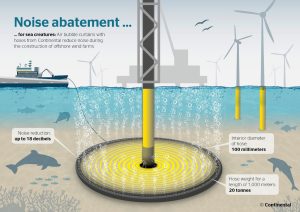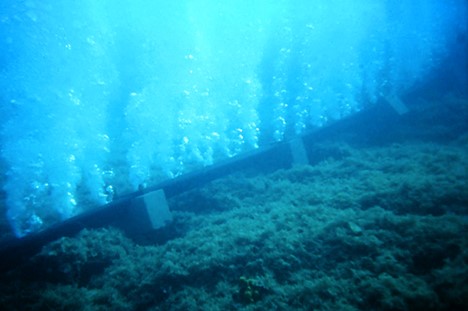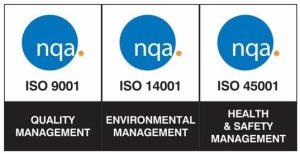As more Offshore Wind is being developed and constructed worldwide it is increasingly important to seek ways to minimize the disruption to marine life during the construction. This is recognized as a key element of developing a sustainable Offshore Wind Industry across the globe and particularly in the US where BOEM and NOAA Fisheries have recently published the “North Atlantic Right Whale and Offshore Wind Strategy” (25 Jan 2024) which identifies key actions for continuing to evaluate and mitigate the potential effects of offshore wind energy development on North Atlantic right whales and their habitat. It also builds on existing mitigation measures to protect North Atlantic right whales from the potential impacts of offshore wind development.
Find out more about one of the existing mitigation methods, which is already being deployed during the construction of the first large scale Offshore Wind projects in the US.
Bubble Curtains Bolster Conservation Efforts
Bubble curtain is a funny name for a serious and useful technology. Although bubble curtains have been around since the 1940’s, their true potential for use to protect aquatic ecosystems and have a positive impact on human communities has only recently been harnessed. They are a key part of overall conservation efforts and bubble curtains aim in part to mitigate noise produced by offshore construction activities, particularly foundation installation.
What is a bubble curtain?
A bubble curtain is an artificial barrier consisting of a continuous stream of bubbles rising from the bottom of a body of water to the surface. It is typically generated using specialized shipborne or shore-based equipment that releases compressed air through perforated hoses or nozzles strategically positioned on the water bottom. The result is a vertical column of bubbles that provides an acoustical and physical barrier.
What do bubble curtains do?
- Protect the North Atlantic Right Whale and other aquatic mammals. Offshore drilling and pile-driving activities generate intense underwater noise that can disrupt and harm marine life, including porpoises, dolphins, whales, and other cetaceans that rely heavily on echolocation for communication and navigation, and require quiet conditions for vital behaviors such as mating, feeding, and migrating. Bubble curtains protect sea mammals by acting as acoustical barriers that absorb and dissipate sound energy (sound abatement) from such anthropogenic activities (see Figure 2).

- Defend fishing habitats. Bubble curtains preserve aquatic habitats by creating physical barriers that deter fish (and mammals) from getting too close to construction sites or intake structures where they may be harmed or disrupted. This is particularly relevant in coastal areas where fishing communities depend on healthy marine resources for their livelihoods.
- Preserve water quality. During construction, drilling, or dredging projects, bubble curtains can also serve as physical barriers to prevent contaminants and pollutants, such as oil spills, trash, chemical discharges, or harmful algal blooms, from spreading and causing irreparable damage to marine ecosystems.
- Figure 2. Cartoon of a ship-blown bubble curtain during a turbine foundation installation performing as both a physical and acoustical barrier to protect sea creatures. Typical noise reduction, hose inner diameter and weight are shown. Courtesy Continental AG.
- Safeguard biodiversity. Climate-change-related rising sea temperatures and ocean acidification pose severe threats to coral reefs. Strategically placed bubble curtains can create localized cooling and buffering effects, which can assist in preserving such habitats that countless marine species rely on for their survival.
In summary, bubble curtains are an environmentally friendly and practical solution that has been used effectively to mitigate anthropogenic disruptions and contamination in aquatic ecosystems. A few of their most prominent uses have been to protect fish and mammals from harmful effects of offshore construction activities, such as acoustical and physical disturbances during foundation installations, preserve water quality by containing pollutants, and safeguard coral reefs from climate-change-related effects. By integrating bubble curtains into various conservation strategies, we can contribute to the resilience of marine resources in coastal regions that humans depend on for their own survival, while simultaneously fostering a more harmonious balance between human activities and the natural world.


